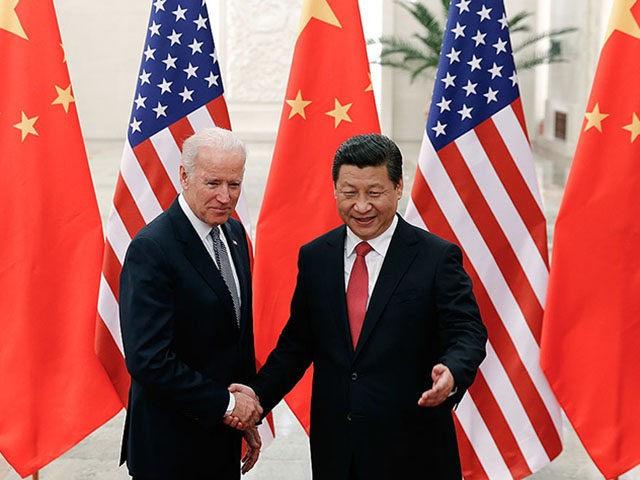China’s trade surplus soared to a record $75.4 billion in November as exports surged 21.1 percent compared with a year ago, highlighting how the global plague that started in China has enriched the Asian behemoth.
China’s exports have soared since Beijing moved to reopen the world’s second-largest economy while much of the industrialized world has staggered under the weight of the pandemic and recently seen economic growth stymied by resurgent infections. The early outbreak of coronavirus in China and its long-term industrial policy to dominate manufacturing proved economically auspicious, allowing China to proper by supplying the world with personal protective gear, work-from-home technology, and many of the goods people have stockpiled during lockdowns.
The surge in exports far exceeded the 12 percent forecast by economists and beat October’s 11.4 percent year-over-year gain. The pace of the growth of imports, what China buys from the rest of the world, declined from October’s 4.7 percent gain to 4.5 percent. Economists had forecast that China’s recent prosperity would increase demand for imports for a 5.3 percent expected gain.
China’s trade surplus with the rest of the world is up 21.4 percent in the first 11 months of 2020 to $460 billion.
A huge driver of the surplus has been exports to the U.S. These are up 46 percent despite the Trump administration’s tariffs. China’s imports from the U.S. have not kept up and fallen behind what would have been expected if China were to meet its obligations under the Phase 1 trade deal. China’s November trade surplus with the U.S. is up 52 percent compared with last November to $37.3 billion.
China promised to buy more American agricultural products, natural gas, and other exports as part of the Phase 1 trade deal. It has fallen so far behind in its purchases that many analysts think it will no be possible to live up to the promised purchases, although recently the pace of purchases has picked up as demand has rebounded. It is not clear how stringently a Biden administration would enforce the agreement or what steps it would take if China falls short.
China is on track to be the only major economy to grow in 2020. The economies of Europe, the U.S., and Japan are all expected to contract on a full-year basis despite strong growth in the third quarter. Outside of China, many of the world’s largest economies are now contracting again or at risk of a double-dip recession due to measures taken to stem the pandemic.
China’s economy shrank by 6.8 percent in the first three months of the year. It grew 3.2 percent in the second quarter, a period in which the U.S. economy contracted 9.5 percent. China’s economy grew 4.9 percent in the third quarter, while the U.S. economy grew 7.4 percent.
China’s exports to the European Union jumped 8.6 percent compared with last November, while imports from the EU rose just 4.6 percent. pushing its trade deficit up 20 percent to $11.3 billion.
–The Associated Press contributed to this report.

COMMENTS
Please let us know if you're having issues with commenting.